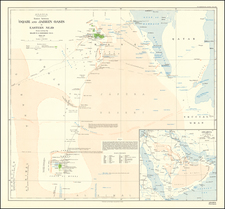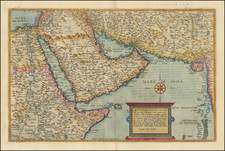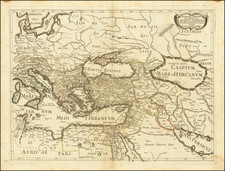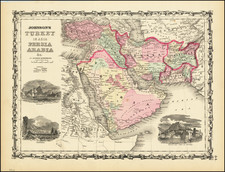Rare map of Assyria and Babylon, from the Aras River to Chaldea and the mouth of the Tigris River.
The map tracks the course of the Euphrates River and Tigris River, the so-called craddle of civilization.
The map provides a marvelous view of ancient Assyria and Babylon during classical times.
Assyria
Assyria was a major Mesopotamian kingdom and empire of the ancient Near East and the Levant. It existed as a state from perhaps as early as the 25th century BC in the form of the Assur city-state,until its lapse between 612 BC and 609 BC, spanning the Early to Middle Bronze Age through to the late Iron Age. From the end of the seventh century BC to the mid-seventh century AD, it survived as a geopolitical entity, for the most part ruled by foreign powers, although a number of Neo-Assyrianstates arose at different times during the Parthian and early Sasanian Empires between the mid-second century BC and late third century AD, a period which also saw Assyria become a major centre of Syriac Christianity and the birthplace of the Church of the East.
Centered on the Tigris in Upper Mesopotamia (modern northern Iraq, northeastern Syria, southeastern Turkey and the northwestern fringes of Iran), the Assyrians came to rule powerful empires at several times. Making up a substantial part of the greater Mesopotamian "cradle of civilization", which included Sumer, the Akkadian Empire, and Babylonia, Assyria was at the height of technological, scientific and cultural achievements for its time. At its peak, the Assyrian empire stretched from Cyprus and the East Mediterranean to Iran, and from what is now Armenia and Azerbaijan in the Caucasus, to the Arabian Peninsula, Egypt and eastern Libya.
The region of Assyria fell under the successive control of the Median Empire, the Achaemenid Empire, the Macedonian Empire, the Seleucid Empire, the Parthian Empire, the Roman Empire, and the Sasanian Empire. The Arab Islamic Conquest in the mid-seventh century finally dissolved Assyria (Assuristan) as a single entity, after which the remnants of the Assyrian people (by now Christians) gradually became an ethnic, linguistic, cultural and religious minority in the Assyrian homeland, surviving there to this day as an indigenous people of the region.
Babylonia
Babylonia was an ancient Akkadian-speaking state and cultural area based in central-southern Mesopotamia. A small Amorite-ruled state emerged in 1894 BC, which contained at this time the minor administrative town of Babylon. Babylon greatly expanded from the small provincial town that it had originally been during the Akkadian Empire (2335-2154 BC) during the reign of Hammurabi in the first half of the 18th century BC, becoming a major capital city. During the reign of Hammurabi and afterwards, Babylonia was called Māt Akkadī "the country of Akkad" in the Akkadian language. It was often involved in rivalry with its older fellow Akkadian-speaking state of Assyria in northern Mesopotamia, as well as Elam to the east, in Ancient Iran. Babylonia briefly became the major power in the region after Hammurabi (fl. c. 1792 - 1752 BC middle chronology, or c. 1696 - 1654 BC, short chronology) created a short-lived empire, succeeding the earlier Akkadian Empire, Third Dynasty of Ur, and Old Assyrian Empire; however, the Babylonian empire rapidly fell apart after the death of Hammurabi and reverted back to a small kingdom.











![[Portrait] L'Asie.](https://storage.googleapis.com/raremaps/img/small/79746.jpg)

![Turkey in Asia [Including Cyprus]](https://storage.googleapis.com/raremaps/img/small/98704.jpg)
